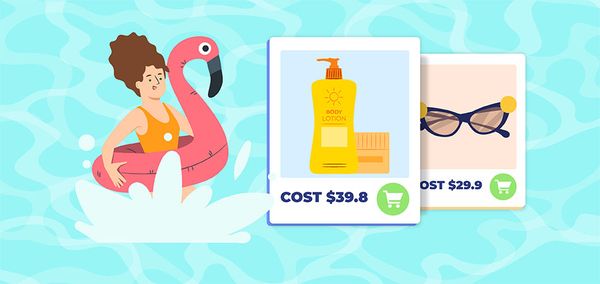What Is Inbound Marketing - Everything You Need to Know

Marketing techniques help you engage customers, build loyal relationships, and improve revenue. However, some marketing tricks leave your customers unengaged. They don’t like the experience, so your footfall decreases.
Inbound marketing is one of the greatest methods to improve your footfall and customer experience. What is inbound marketing? How do you achieve it? How does it help you attract customers?
We will resolve these questions below.
What Is Inbound Marketing
The basic question that we should be asking first is: what is inbound marketing?
This is a technique of marketing in which dropshipping businesses create valuable customer relationships. Inbound marketing empowers your customers to achieve the desired goal with your company.
Why does this marketing technique work for dropshipping businesses?
Your customers are able to find what they are looking for, which means they are successful in their quest. As a result, your business is able to achieve the desired goal.
How Is It Different Than Outbound Marketing
In outbound marketing techniques, we don’t build user connections. In fact, we interrupt the user while they are achieving something, give them information, and try to convert them. This includes marketing activities like cold emailing, blanket marketing tricks, and advertising on television.
Many times, customers don’t want to see these outbound marketing efforts. For example, if the user is watching their series and your ad pops up, they may be interested in your service. But, remember that they may also think this is not relevant to me.
| Get Started Now to Grow Your Online Business with the Best AliExpress Dropshipping Tool - DSers! |
In inbound marketing, we nurture relationships. An example of this can be informational content delivery. The user wants to know how they can make payments online, and your articles provide them with this information. You are building a connection and encouraging the user to remember your brand.
Remember that inbound marketing does not stop once you have converted the lead. The idea behind this marketing trick is to offer an unimaginably good customer experience. So, what do we do? We keep creating valuable, driven experiences throughout every touchpoint of the customer’s journey with our brand.
Top Strategy for Inbound Marketing
So, what is the best strategy you can use for inbound marketing?
Before we move to any of the strategies discussed below, it is necessary to keep a clear goal in mind. With inbound marketing, we are trying to create valuable customer relationships. The only way to create a valuable relationship with any customer is to offer the data and information they need. You need to help the customer achieve their goal. When you do that, the customer starts trusting your brand, which helps convert leads and generate repeat business.
Attract
The first strategy under inbound marketing is to attract the customer. This means offering content to the customer that they wish to read.
Some things that you can achieve to attract customers are:
- Create content your audience wants to read. In a dropshipping business, we often believe that we don’t need content marketing. We think we only need to promote our products to generate leads. However, creating and uploading valuable content, such as social media posts and blog articles, on your website allows you to help users. You are able to solve challenges. For example, if you are selling cute fuzzy socks, you can write content about using the right socks in the right season. This way, you are solving a challenge faced by the customer.
- The next strategy for inbound marketing is using SEO. How will your customers reach your content? You are writing one blog a day and posting on social media consistently, but you are not able to get footfall. The reason might be your SEO strategy (or the fact that you aren’t using any). Use SEO keywords and tricks to attract new customers. If your content is not optimized, you may face issues reaching your audience.
- Create value-generating, properly formatted and edited, and non-promoting content. If you are only promoting your brand in the article, then that’s not inbound marketing.
Involve
The next strategy for inbound marketing is to involve your audience. The main target of inbound marketing is to create long-term relationships with your users. You don’t want them to shop once. It is much easier to build your wealth with repeat business than with new leads every time. Therefore, one of the greatest strategies of all time is long-term customer nurturing, re-selling, and cross-selling.
Some methods to achieve this:
- Change the method of how your business takes sales calls. Of course, when a customer is calling, you may want to jump at the first chance to sell them your most revenue-generating product. But, wait, change your sales strategy to offer a solution to the customer. Even if that means you need to settle for less profit, that’s okay! This activity allows the customer to build trust in your brand, which helps in the long term.
- Try using unbiased views on different things in your content as well. If you are biased and talking about your products in an obvious way, then you are just generating promotional content. We should be biased in favor of your products while still providing customers with accurate and up-to-date information.
Improve Experience
So far, we have learned to attract and involve users. In this section, we will see how you can improve your experience.
Improving experience means generating happy conversations. Your users should be impressed by your service. For this, we need to improve the customer experience, and here are some ways to do the same:
- You can start by using a dropshipping tool. This tool will help you track and manage your supply chain. When customers have queries, you will have centralized data to support them.
- If possible, create surveys asking about the users’ journey with the brand. This will allow you to identify your weak and strong points, based on which you can make changes.
- Try to find a solution for the customer as soon as possible. We are in the digital era, and we all expect quick responses. You don’t want to take 7 business days to respond to users. Try to find out information as early as possible and respond with a solution.
- Reward your repeat customers. If a customer has shopped with you for long enough, offer them a special discount or premium membership. In this way, you are creating brand advocates. They may talk about your dropshipping business and bring you more revenue.
- One of the things that we always suggest for dropshipping businesses is to respond. If you are marketing on social media, you need to respond to both positive and negative comments. You can miss the positive ones, but always try to retain a customer who has left a negative review.
Conclusion
Inbound marketing is a revenue-generating technique that can help your business grow and earn more. You only need to understand the basics, improve your content delivery methods, and attract new customers.
Throughout this discussion, you may have noticed that we are indirectly talking about keeping the customer first. Naturally, since we are dropshipping business owners, we may want to keep our brand and products first. But, when you keep customers first, you make them feel good, which always works positively for your brand. So, what are you waiting for? Read the above details and start using inbound marketing













 Company
Company
 Why Choose DSers
Why Choose DSers
 Blog
Blog
 Help Center
Help Center




 Live Chat
Live Chat